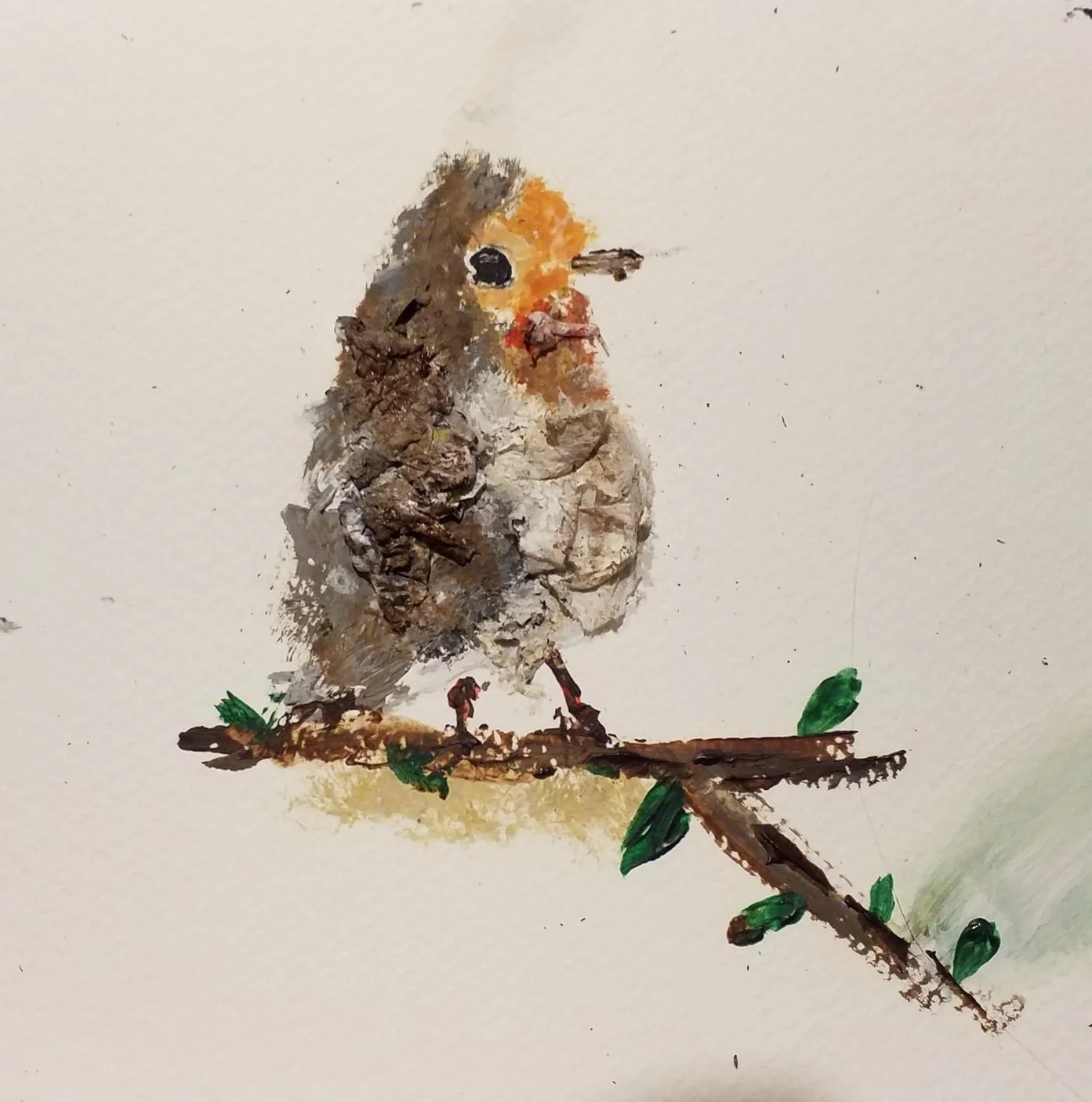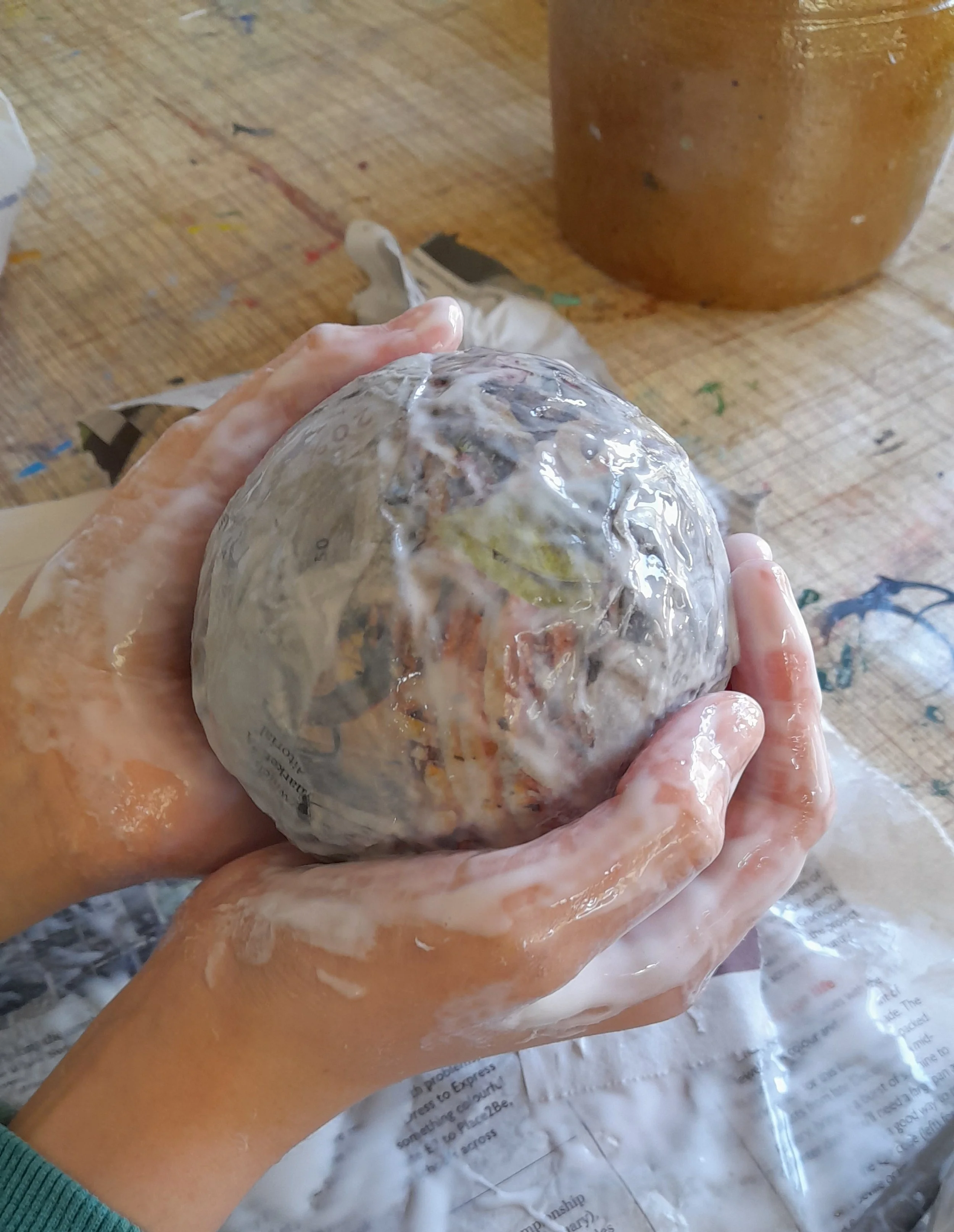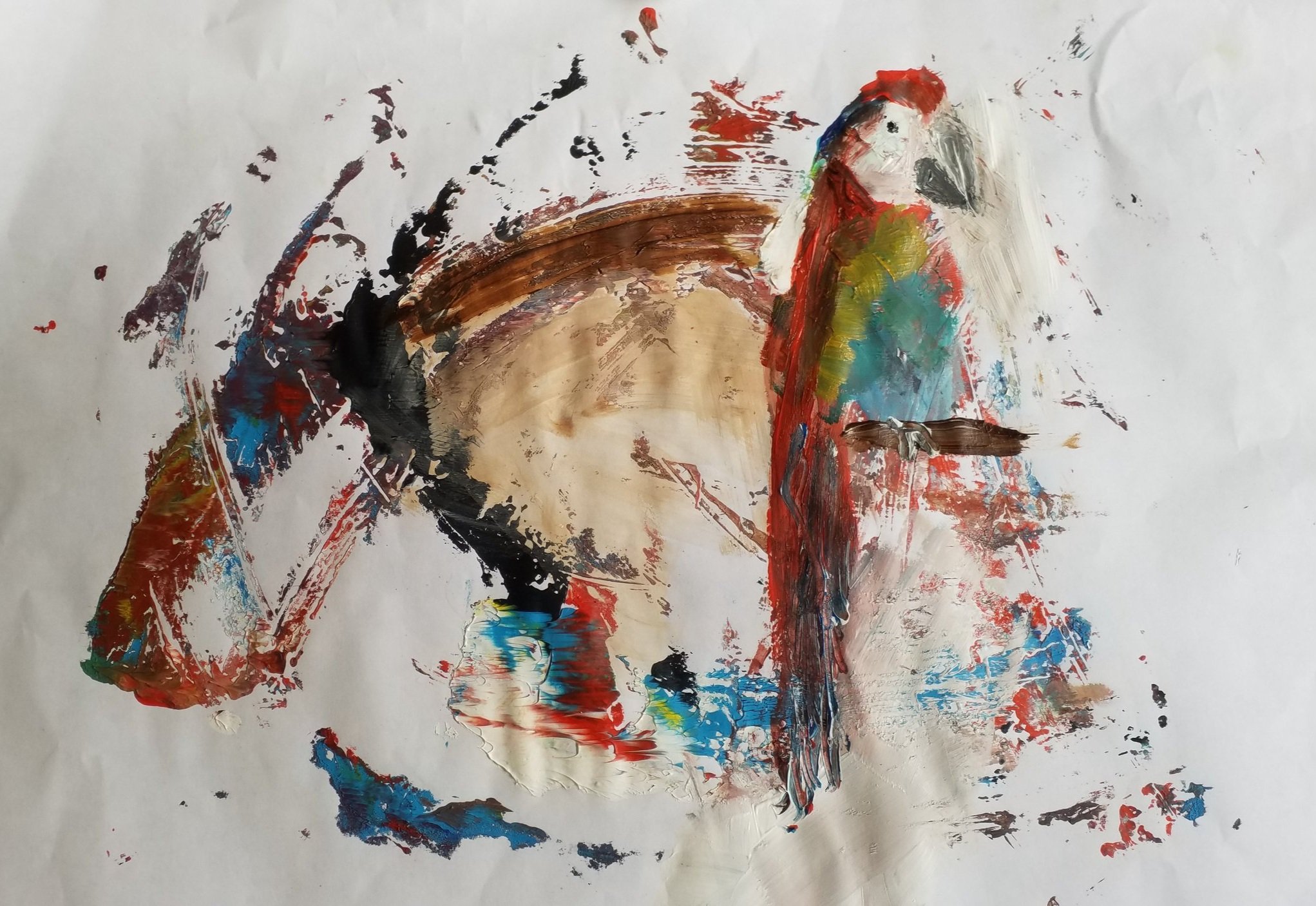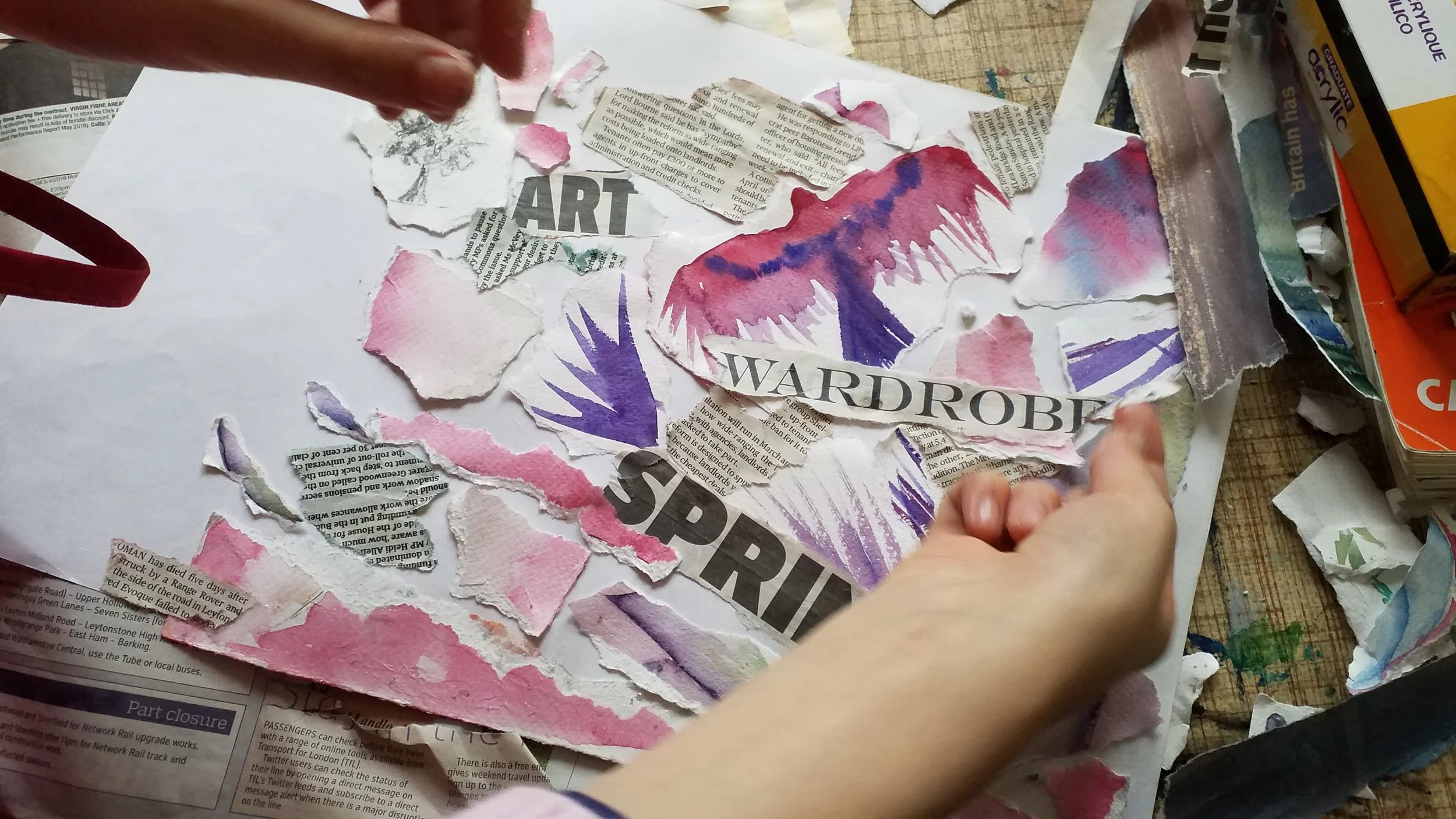See how the softness of the feathers is built with toilet paper, glue and acrylics. She developed her own ideas. The only guidance was “to do what she wanted”.
Building a paper ball with newspaper and glue. The original intention, which was to paint for a school project, didn’t happen. This is fine. The most important was the process itself, and she just loved it :)
Helping a child to draw or paint, what does this mean?
My philosophy is that we can learn everything but the success of it is when it happens at the right time. My experience has taught me that there is no point to teach some technique to a child if he/she is not ready!
I have had the immense honour to work with Georgie for a year and a half. She is a child full of energy and with very promising creative capacities, however at the time she had a lack of confidence in her creativity and I decided to help her explore her ideas and how to shape them.
It was so obvious to see how she anchored her interest in drawing things the way they “should be”. This is unfortunately the result from a tightened educational system. At 9 year old, a child should be able to play on a white page - but she didn’t. Instead, she would start, and would stop with frustration, destroy her efforts, and start again. She would never go much further than her first attempt. Then she would beg for looking up online for a reference photograph.
At this stage, Georgie was somehow trapped in “others’ expectations”, and she wasn’t connected with her own creativity at all. I decided to help her change this.
Let me share a few tips used with her.
Channelling Creativity
Gradually, I restricted her practice by using one blank sheet at a time. Being allowed to start a new sheet meant that she needed to have some sense of achievement from her first art work. So she learnt to trust and deepen her process by transforming the first few lines and shapes put on the paper. Basically, she needed to learn how to play. Also, I gave a new rule which was not to use any reference photograph at all. This was a big change, and not an easy one.
Building flowers with a cotton bud for home-made cards.
Change takes time. A year later we were able to feel (and see!) the benefits of the practice as she now loves exploring her ideas. She is a very sensorial child and the more messy we were, the happier she was.
Welcoming the Unplanned
For instance, these cards started with the intention of making home-made cards, but she had to face the unexpected stain appearing on the edges of the paper. She beautifully adapted to “the unplanned” !
… and the parrot appeared !
Learning to see beyond the obvious
One way to stimulate the imagination is to play with random lines or stains. It is essential to get confident in what we can see “within the picture”.
The example beside is the magic of how Georgie could see this parrot within the random shapes and colours on the page. We usually spread on paper the left over of paint at the end of each session. And here how she “recyled” one of them! Here is when she could fully enjoy her creativity, have fun and develop her ideas with confidence.
A collage on the making.
Playing with random, colours, and words - an excellent way to help with dyslexia too.
Is it inspiring ?
Feel free to share your thoughts and experiences!
Children are the promise of the future, how can we help them flourish?
How can we help them imagine and dare create?
How can we let them achieve their dreams?






